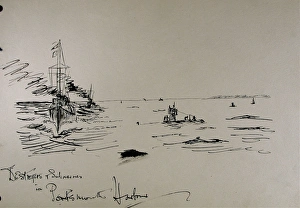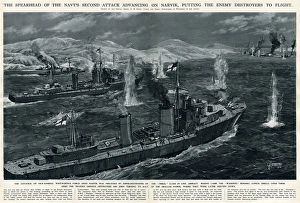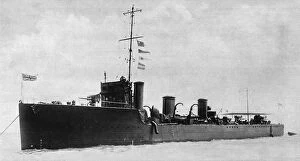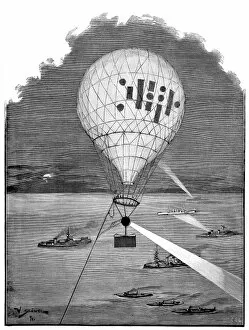Destroyers Collection (page 3)
"Destroyers: Unleashing Britain's Sea Power" In the midst of WW1, the mighty HMS Arethusa, a British light cruiser, gracefully sails alongside a fleet of destroyers
All Professionally Made to Order for Quick Shipping
"Destroyers: Unleashing Britain's Sea Power" In the midst of WW1, the mighty HMS Arethusa, a British light cruiser, gracefully sails alongside a fleet of destroyers. Together, they epitomize Britain's unrivaled sea power. "The Last Shot by Matania" captures the heroic scene as survivors from Blucher, battle-worn and determined, find solace amidst the chaos of Dogger Bank during WW1. These brave souls owe their lives to the valiant efforts of destroyers. Amidst the grandeur of Dolmabahce Mosque in Istanbul, Turkey stands a testament to naval supremacy - Scapa Flow. Here lies an awe-inspiring sight; destroyers sinking off the Island of Fara symbolizing sacrifice made for victory. With relentless pursuit and unwavering determination, a British destroyer chases down a German U-boat during WW1. This iconic image showcases not only technological prowess but also indomitable spirit. The year is 1930 when Alexandra announces The Naval Programme - revealing details about budget reductions within British Royal Navy Fleet. Despite challenges faced onshore, these destroyers remain steadfast guardians at sea. As World War II rages on in 1944, German Armoured Vehicles like Jagdtiger pose formidable threats. Yet even against such odds, H. M. S Hardy and her fellow destroyers stand resolute in defense of freedom and peace. From battles fought to victories won, Britain's history intertwines with thatof its fearlessdestroyer fleet. These vessels embody strength, courage, and resilience – safeguarding our seasand protecting our nation’s legacy.




























